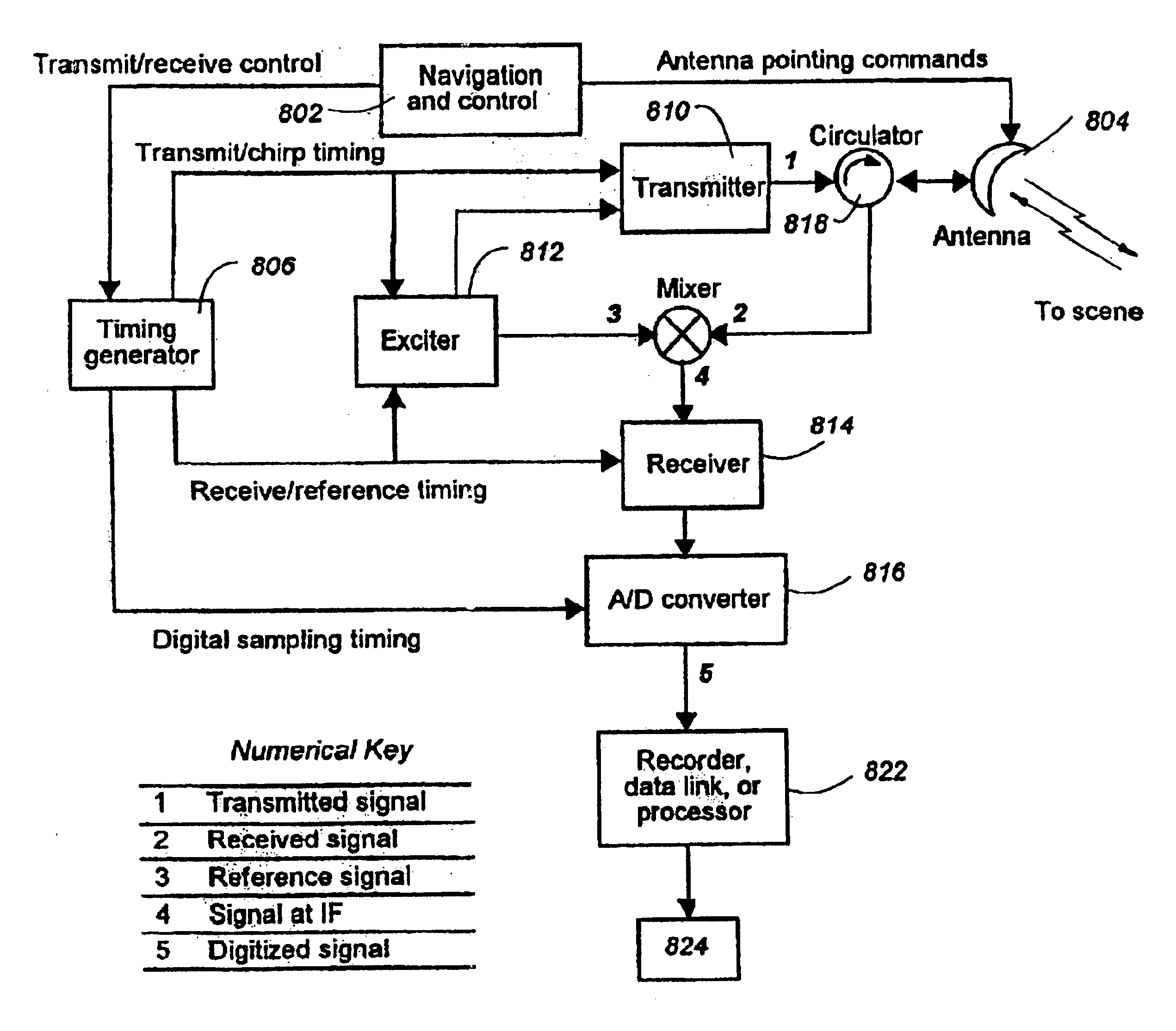Dynamic logic algorithm used for detecting slow-moving or concealed targets in synthetic aperture radar (SAR) images
- Summary
- Abstract
- Description
- Claims
- Application Information
AI Technical Summary
Benefits of technology
Problems solved by technology
Method used
Image
Examples
example 1
Single Target Detection
[0092]A target is moving with vx=0.5 m / s and has an initial position x0=−6 m, y=3030 m.
[0093]The signal to clutter ratio (SCR) is defined by the maximum absolute value of the target signal and random clutter that is properly scaled. More details on the SCR definition are provided later.
[0094]Detecting more than one target requires adding more models to the algorithm. Similar to the single target case, m=1 represents clutter, m=2 represents target 1, m=3 represents target 2, . . . , m=M represents target M-1. Each target has its own target parameters to be estimated: x0m, y0m and Vxm.
[0095]The probability distribution functions are computed as follows:
[0096]
pdf(n|I)=[r1 r1 . . . ]T, pdf(n2)=∑t=0Np-1 r2·G2(n,t)for the 1st target parameters,pdf(n3)=∑t=0Np-1 r3·G3(n,t)for the 2nd target parameters,⋮ pdf(nM)=∑t=0Np-1 rM·GM(n,t)for the (M-1)th target parameters,
with the requirement that r1+r2+ . . . +TM=1.
[0097]The total pd...
example 2
[0100]
Target 1Target 2Target 3νx0.3m / s0.4m / s−0.3m / sSCR−0.70dB−1.98dB−0.73dB
[0101]The mutual information functions are individually computed for each target model (Lm) and compared to a threshold. Lm=∑n=1N S(n)ln[pdf(n1)+pdf(nm)] for m=2,3,… M L({circumflex over (x)}0,ŷ0,{circumflex over (v)}0)>threshold →target
L({circumflex over (x)}0,ŷ0,{circumflex over (v)}0)>threshold →no target
Performance Analysis
[0102]Receiver operating curves (ROC) were produced in a standard way using simulated clutter. We generated random clutter scenarios in 100×100 pixel images with one meter range and cross-range resolutions. The dynamic logic algorithm was then executed with and without a target signal added to the clutter. This was done using 150 random realizations for several signal-to-clutter ratios.
Simulating Clutter with a Specific Signal to Clutter Ratio
[0103]The performance of the dynamic logic algorithm is evaluated using simulated clutter that is scaled with respect to a simulate...
PUM
 Login to View More
Login to View More Abstract
Description
Claims
Application Information
 Login to View More
Login to View More - R&D Engineer
- R&D Manager
- IP Professional
- Industry Leading Data Capabilities
- Powerful AI technology
- Patent DNA Extraction
Browse by: Latest US Patents, China's latest patents, Technical Efficacy Thesaurus, Application Domain, Technology Topic, Popular Technical Reports.
© 2024 PatSnap. All rights reserved.Legal|Privacy policy|Modern Slavery Act Transparency Statement|Sitemap|About US| Contact US: help@patsnap.com










